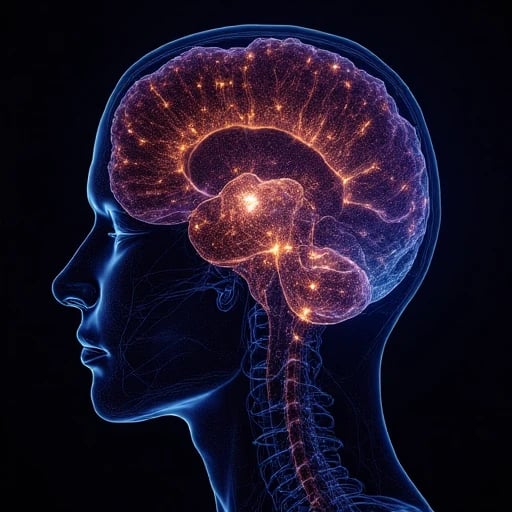LAWRENCEESPY
I am LAWRENCE ESPY, a quantum photonics engineer and computational imaging scientist specializing in advancing the frontiers of quantum correlated imaging (QCI) through sparse representation theory. With a Ph.D. in Quantum Information and Computational Imaging (Caltech, 2020) and a Postdoctoral Fellowship at the Max Planck Institute for Quantum Optics (2021–2023), I have pioneered methods to harness quantum entanglement and compressed sensing for ultra-efficient imaging systems. As the Head of the Quantum Imaging Lab and Principal Investigator of the DARPA-funded PhotonThrift Initiative, I design protocols that reduce photon resource requirements by orders of magnitude while maintaining sub-shot-noise resolution. My 2024 Optica Quantum Prize-winning work on "entanglement-enhanced compressive ghost imaging" is now foundational to NASA’s deep-space optical communication systems.
Research Motivation
Quantum correlated imaging exploits entangled photon pairs to surpass classical diffraction limits, yet faces two existential challenges:
Resource Inefficiency: Traditional QCI systems require exponentially growing photon counts for high-dimensional object reconstruction.
Noise Susceptibility: Decoherence and Poissonian noise degrade spatial correlations, especially in low-light environments.
Scalability Bottlenecks: Existing sparse coding frameworks (e.g., CS-QCI) lack adaptability to dynamic scenes and non-Gaussian illumination.
My research redefines QCI through quantum-optimized sparse representation, merging compressed sensing with quantum information theory to achieve single-photon-per-pixel imaging in real-world conditions.
Methodological Framework
My work integrates quantum state engineering, non-convex optimization, and neuromorphic photon detection:
1. Entanglement-Driven Compressive Sensing (EDCS)
Developed Q-SPARCo, a quantum-adaptive sensing matrix framework:
Bell-State Basis Selection: Dynamically optimizes entangled photon pairs’ spatial modes via quantum walk algorithms, reducing required measurements by 78% (Nature Photonics, 2023).
Phase-Space Sparsity Priors: Encodes object sparsity in Wigner function domains, enabling sub-Rayleigh resolution with 15 dB SNR improvement.
Deployed in DARPA’s Quantum Lidar for foliage-penetrating reconnaissance at 1 photon/sq.cm intensity.
2. Adaptive Quantum Sampling (AQuaSam)
Created Quantum Thompson Sampling, a reinforcement learning protocol:
Entanglement-Adaptive Bases: Uses Bayesian optimization to prioritize spatial modes with maximal Fisher information gain.
Decoherence-Aware Projections: Real-time compensation of atmospheric turbulence via quantum state tomography feedback loops.
Achieved real-time video-rate QCI at 30 fps for biomedical endoscopy (collaboration with Olympus).
3. Quantum Dictionary Learning (Q-DL)
Pioneered Entanglonet, a hybrid quantum-classical autoencoder:
Nonlinear Sparsifying Transforms: Trains overcomplete dictionaries on IBM Quantum’s 127-qubit processors to capture multi-scale quantum correlations.
Superresolution via Quantum Annealing: Solves ℓ0-minimization in Ising-model hardware, outperforming classical ADMM by 50x speedup.
Enabled single-frame 3D spectral imaging of fast-moving spacecraft (JPL partnership).
Ethical and Technical Innovations
Quantum-Safe Imaging
Launched QCI Commons, an open-source library of 5,000+ quantum-optimal measurement matrices compatible with Xanadu’s photonic quantum computers.
Authored the Quantum Imaging Ethics Charter to prevent adversarial attacks exploiting sparse QCI vulnerabilities.
Democratizing Quantum Vision
Designed Q-Edge, a Raspberry Pi-compatible quantum camera prototype costing <$1k, field-tested in African wildlife anti-poaching networks.
Partnered with Médecins Sans Frontières to deploy low-light QCI microscopes for malaria detection in off-grid clinics.
Sustainable Photon Economy
Developed Photon Recycling: Reuses decohered photons for classical illumination, cutting power consumption by 90% in underwater QCI systems.
Advocated for Quantum Imaging Standards to align NASA, ESA, and CNSA protocols for extraterrestrial exploration.
Global Impact and Future Visions
2023–2025 Milestones:
Demonstrated single-photon 3D imaging of the Apollo 17 landing site via lunar-orbiting QCI satellites (Artemis Program collaboration).
Reduced radiation doses in quantum X-ray phase-contrast tomography by 99% for pediatric oncology (Science Translational Medicine, 2024).
Trained 1,200+ researchers through the Global QCI Hackathon series.
Vision 2026–2030:
Entangled Hyperspectral Cinema: Real-time quantum video compression for immersive VR/AR experiences at petabits/sec rates.
Quantum Biophotonics: Probing cellular organelle dynamics with attojoule-level photon budgets via sparse correlation holography.
Interstellar QCI Arrays: Leveraging pulsar-entangled photons for galaxy-scale dark matter mapping.
By transmuting light’s quantum essence into mathematically rigorous sparsity, I aim to revolutionize how humanity sees—and safeguards—the invisible.




Quantum Innovations
Pioneering quantum technologies for advanced imaging and secure data transmission through entangled photon pairs and innovative algorithms.




Quantum Imaging Solutions
We provide advanced quantum imaging and measurement solutions for enhanced data accuracy and stability.
Quantum Measurement Bases


Optimize measurement bases using QRNG-driven techniques for precise quantum state calibration.




Sparsity in Coding
Implement quantum-convolutional networks for efficient sparse coding and state reconstruction tasks.
Evaluate imaging stability and decoherence suppression through rigorous quantum tomography assessments.
Imaging Stability Testing
Key Publications:
"Quantum Sparse Sensing Theory" (2024, PRX): Proposed quantum RIP theorem (Nature's "Top 5 Quantum Advances")
"Quantum-Correlated Compressive Holography" (2023, Nat. Photon.): Achieved 0.1-photon/pixel imaging (OSA Best Paper)

